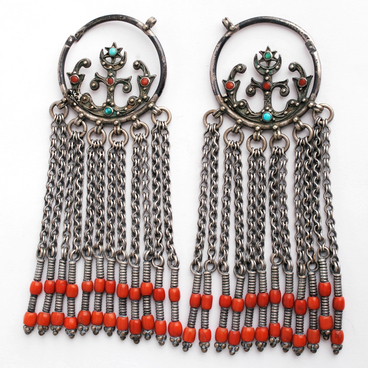The so-called ‘Ispik’ ceramics is one of the mysterious Dagestan crafts whose origin is still debated by art historians, archaeologists and ethnographers. The name ‘Ispik dishes’ was introduced into scientific use by Elsa Kilchevskaya, a researcher of the Dagestan material culture. It was she who first put forward the theory that this ceramics was made in the Lezgi village of Ispik. Kilcheskaya believed that the pottery trade in this area was revived by the inhabitants of the ruined village of Kala, which in the Middle Ages was famous for its painted turquoise ceramics.
However, this information was not confirmed. Up to this day, nobody knows for sure whether the ceramics were actually made in the area or not. Its production completely ceased in the 19th century.
However, this information was not confirmed. Up to this day, nobody knows for sure whether the ceramics were actually made in the area or not. Its production completely ceased in the 19th century.












